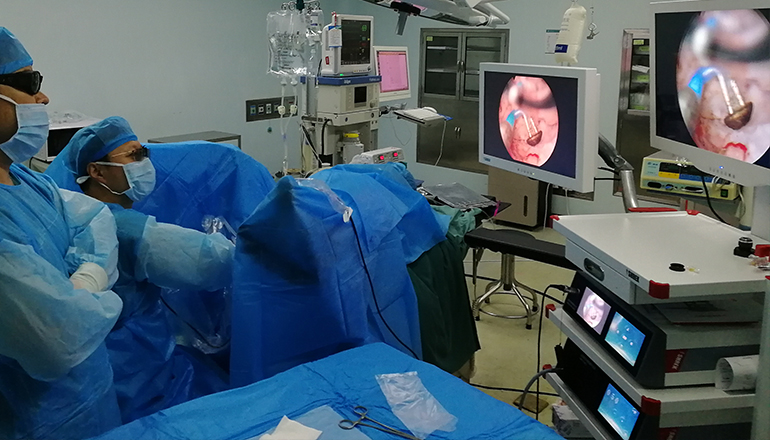- Shanghai, China
- [email protected]
- +86-21-58189111
3D endoscopic technology is a recent advancement in medical imaging that has shown promise in improving the accuracy and precision of cystoscopy surgery. Unlike traditional 2D imaging, 3D endoscopic technology creates a three-dimensional image that provides surgeons with a more comprehensive view of the bladder and surrounding tissues. Here are some of the applications of 3D endoscopic technology in cystoscopy surgery:
Improved depth perception: 3D endoscopic technology provides a more accurate depth perception, allowing surgeons to better visualize the spatial relationships between different structures within the bladder. This can be particularly useful when performing complex procedures, such as ureteral reimplantation.
Enhanced visualization: 3D endoscopic technology offers a more realistic representation of the bladder and surrounding tissues, allowing surgeons to see more clearly and identify small or hidden structures. This can be particularly useful when identifying tumors or other abnormalities in the bladder.
More precise surgical planning: 3D endoscopic technology provides surgeons with a more detailed view of the bladder and surrounding tissues, allowing them to plan and execute procedures with greater precision. This can help to reduce the risk of complications and improve patient outcomes.

Reduced surgical time: 3D endoscopic technology can help to reduce surgical time by providing surgeons with a more comprehensive view of the bladder and surrounding tissues. This can help to reduce the need for repeated procedures or corrections, leading to faster recovery times for patients.
Improved training: 3D endoscopic technology can be used for training purposes, allowing medical students and trainees to better understand the anatomy and pathology of the bladder and urinary tract. This can help to improve the quality of medical education and lead to better patient outcomes in the long run.
However, it's important to note that the adoption of 3D endoscopic technology in cystoscopy surgery may require additional investment in equipment and training. Healthcare facilities may need to purchase new equipment and train their staff on how to use it effectively. Additionally, the cost of the technology may be higher than traditional endoscopic equipment.
3D endoscopic technology offers significant advantages for cystoscopy surgery, including improved depth perception, enhanced visualization, more precise surgical planning, reduced surgical time, and improved training. As the technology continues to advance and become more widely available, we can expect to see even more benefits for patients and healthcare professionals alike.
Despite the benefits, there are also some limitations to 3D endoscopic technology in cystoscopy surgery. The technology is still relatively new, and there may be a learning curve for surgeons and medical professionals who are not familiar with the technology. In addition, the cost of the technology may be a barrier to adoption for some healthcare facilities.
Furthermore, some studies have suggested that 3D endoscopic technology may not be superior to traditional 2D endoscopy in all cases, and that the benefits of 3D technology may be more pronounced in certain types of surgeries or procedures. More research is needed to fully evaluate the benefits and limitations of 3D endoscopic technology in cystoscopy surgery.
In conclusion, 3D endoscopic technology offers significant potential benefits for cystoscopy surgery, including improved depth perception, enhanced visualization, more precise surgical planning, reduced surgical time, and improved training. As the technology continues to develop and become more widely available, it may become a valuable tool for surgeons and healthcare professionals in the treatment of bladder and urinary tract conditions. However, healthcare facilities should carefully evaluate the benefits and limitations of the technology before making an investment, and ensure that their staff are properly trained in its use.
Leave a Comments